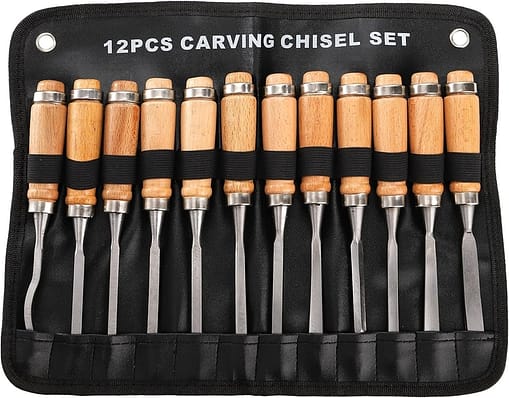So you’ve got a creative streak and a keen eye for craftsmanship, and now you’re thinking How Do I Start A Successful DIY Business? Well, you’ve come to the right place! In this article, we’ll explore the essential steps you need to take in order to kickstart your very own do-it-yourself empire. From identifying your niche to setting up your online presence, we’ll cover all the tips and tricks you need to know to turn your passion into a profitable business. So grab your tools and let’s get started on this exciting entrepreneurial journey!

Starting a DIY business can be an exciting and rewarding venture. It allows you to utilize your creativity, skills, and expertise to create unique products or offer specialized services. However, before diving into the world of entrepreneurship, it is important to take some crucial steps to ensure the success and profitability of your business. In this article, we will guide you through the process of choosing a DIY business idea, developing a business plan, acquiring skills and knowledge, sourcing materials and equipment, setting up a workspace, creating a brand and identity, marketing and promotion, pricing and cost management, managing finances and resources, and expanding and scaling your business.
Choosing a DIY Business Idea
The first step in starting a DIY business is to identify your areas of interest and expertise. Think about the things you are passionate about and the skills you possess. Are you skilled in woodworking, jewelry making, or home decor? Do you have a knack for gardening, baking, or fashion design? By choosing a business idea that aligns with your interests and expertise, you are more likely to enjoy the process and stay motivated.
Once you have identified your areas of interest and expertise, it is important to research market trends and demand. Analyze the current market to understand which DIY products or services are in high demand. Look for gaps or niches that you can fill with your unique offerings. This will help ensure that there is a viable market for your business idea and that you can attract customers.
Consider your target audience when choosing a DIY business idea. Think about who would be interested in your products or services. Are you targeting young adults, parents, homeowners, or a specific demographic group? Understanding your target audience will help you tailor your offerings and marketing efforts to meet their needs and preferences.
Finally, it is crucial to evaluate the competition in your chosen DIY business niche. Research existing businesses and identify their strengths and weaknesses. This will help you differentiate your offerings and find a unique selling point that sets you apart from the competition. By understanding the competitive landscape, you can also determine if there is room for your business to thrive and grow.
Developing a Business Plan
Once you have chosen a DIY business idea, it is important to develop a comprehensive business plan. A business plan will serve as a roadmap for your business and help you stay focused on your goals and objectives. Here are some key components to include in your business plan:
Define your business concept and mission
Clearly articulate your business concept and mission. What is the purpose of your DIY business? What value do you aim to provide to your customers? Defining your business concept and mission will help guide your decision-making and ensure consistency in your operations.
Set achievable goals and objectives
Set specific, measurable, achievable, relevant, and time-bound (SMART) goals and objectives for your DIY business. These goals will serve as milestones that you can work towards to measure your progress and success. For example, you may set a goal to achieve a certain number of monthly sales or launch a new product line within a specified timeframe.
Conduct market research
Market research is crucial for understanding your target market, customer preferences, and industry trends. Conduct surveys, interviews, and analyze market data to gather important insights that will inform your business strategy. Market research will also help you determine pricing strategies, identify potential customers, and develop effective marketing campaigns.
Create a detailed financial plan
A detailed financial plan is essential for the success of your DIY business. It includes an analysis of start-up costs, projected revenue and expenses, pricing strategies, and profit margins. Consider consulting with a financial advisor or accountant to ensure accuracy and feasibility in your financial projections.
Determine the legal structure of your business
Decide on the legal structure of your DIY business, such as sole proprietorship, partnership, or limited liability company (LLC). Each legal structure has its own implications in terms of liability, taxes, and management. Consult with a legal professional or business advisor to determine the most suitable structure for your business.
Register your business and obtain necessary licenses
Register your DIY business with the relevant governmental authorities to ensure compliance with legal and regulatory requirements. Depending on your location and the nature of your business, you may also need to obtain specific licenses or permits. Research the specific requirements for your industry and location to ensure that you are operating legally.

Acquiring Skills and Knowledge
To excel in your DIY business, it is important to acquire the necessary skills and knowledge in your chosen niche. Here are some steps you can take to enhance your expertise:
Identify the skills required for your chosen DIY business
Research the skills and knowledge needed to excel in your chosen DIY business. Identify any gaps in your current skill set and determine how you can acquire or improve upon these skills.
Consider taking relevant courses or getting certified
Look for relevant courses or certifications that can provide you with the necessary knowledge and expertise. These courses may be available online or through local institutions. Investing in your education will not only enhance your skills but also provide a sense of credibility to your customers.
Attend workshops and conferences
Networking and continuous learning are essential for success in any business. Attend workshops, conferences, and seminars related to your DIY business niche. These events provide valuable opportunities to learn from industry experts, network with like-minded individuals, and stay up-to-date with the latest trends and techniques.
Join DIY communities and online forums
Joining DIY communities and online forums can provide a wealth of knowledge and support. Engage with fellow DIY enthusiasts, ask questions, and share your own expertise. These communities can offer valuable insights, tips, and inspiration for your DIY business.
Sourcing Materials and Equipment
Sourcing high-quality materials and equipment is crucial for the success of your DIY business. Here are some tips to help you find reliable suppliers and manage your inventory effectively:
Determine the necessary materials and equipment for your DIY projects
Make a list of all the materials and equipment you will need to create your DIY products or provide your services. Research and identify the best suppliers for each item and ensure that they can consistently provide high-quality materials at affordable prices.
Find reliable suppliers and negotiate favorable deals
Research and reach out to multiple suppliers to compare prices, quality, and delivery times. Negotiate favorable deals to ensure that you can maintain healthy profit margins. Building strong relationships with suppliers can also lead to better deals and discounts in the long run.
Consider alternative sources for cost savings
Explore alternative sources for materials and equipment to save costs. For example, consider purchasing second-hand equipment or sourcing materials from local suppliers to avoid expensive shipping fees. Be cautious when using alternative sources, ensuring that quality is not compromised.
Maintain an inventory system
Implement an inventory system to track your materials and equipment. This will help you stay organized, avoid stockouts or overstocking, and ensure that you have sufficient resources to fulfill customer orders. Regularly update your inventory records and conduct periodic audits to identify any discrepancies.
Setting Up a Workspace
Creating a suitable workspace is essential for productivity, efficiency, and safety. Consider the following factors when setting up your DIY workspace:
Choose a suitable location for your workspace
Select a location that is convenient and conducive for your DIY business. Factors to consider include proximity to suppliers, target market, and access to transportation. If you are operating from home, designate a specific area as your workspace to maintain a work-life balance.
Set up an organized and functional layout
Design your workspace in a way that promotes efficiency and productivity. Ensure that you have sufficient storage for materials and equipment, a designated work surface, and easy access to tools and resources. Keep your workspace clean and organized to minimize distractions and maximize productivity.
Ensure proper lighting and ventilation
Good lighting is crucial for precision and safety in DIY projects. Ensure that your workspace has adequate natural and artificial lighting. Ventilation is also important to maintain a comfortable and healthy working environment. Install fans or air conditioning systems if necessary.
Invest in necessary safety equipment
Safety should be a top priority in any DIY business. Invest in necessary safety equipment such as goggles, gloves, fire extinguishers, and first aid kits. Conduct regular safety inspections and ensure that all equipment is in good working condition. Educate yourself on proper safety procedures and ensure that all employees or collaborators are trained as well.
Creating a Brand and Identity
Creating a strong brand and identity is crucial for building customer loyalty and standing out in a competitive market. Consider the following steps to create a memorable and recognizable brand:
Choose a memorable and relevant business name
Select a business name that is easy to remember, relevant to your DIY business, and reflects your brand personality. Conduct a thorough search to ensure that the name is not already in use and register it to protect your intellectual property.
Design a unique logo and brand visuals
A well-designed logo and brand visuals can make a lasting impression on customers. Hire a professional designer or use online tools to create a unique and visually appealing logo. Consistency in design and branding across all platforms will help build brand recognition.
Build a consistent brand image across different platforms
Ensure that your brand image remains consistent across different platforms, including your website, social media profiles, packaging, and marketing materials. Consistency in branding builds trust and reinforces your unique value proposition.
Develop a brand voice and tone
Consider the tone and messaging that will resonate with your target audience. Develop a brand voice that aligns with your brand personality and values. This will help you communicate effectively with your customers and build a strong connection.
Marketing and Promotion
Effective marketing and promotion are essential for attracting customers and growing your DIY business. Consider the following strategies to reach your target market:
Identify your target market and customer demographics
Define your target market and understand their demographics, interests, and buying behavior. This will help you tailor your marketing efforts and create targeted campaigns that resonate with your potential customers.
Create a marketing strategy and budget
Develop a comprehensive marketing strategy that includes both online and offline channels. Determine the most effective marketing tactics for your DIY business and allocate a budget accordingly. This may include paid advertising, content marketing, social media marketing, email marketing, and more.
Utilize digital marketing tools and social media platforms
Take advantage of digital marketing tools and social media platforms to reach a wider audience. Create engaging content, leverage search engine optimization (SEO) techniques, and engage with your audience through social media platforms. Explore paid advertising options such as Google Ads or Facebook Ads to further enhance your reach.
Collaborate with influencers or bloggers for promotion
Consider collaborating with influencers or bloggers in your DIY niche. Influencers can endorse your products or services, promote your brand on their social media platforms, or collaborate on content creation. This can help increase your brand visibility and attract new customers.
Attend trade shows and local events
Participating in trade shows, craft fairs, or local events provides opportunities to showcase your products or services, interact with potential customers, and network with industry professionals. Research relevant events in your area and plan to attend or exhibit to gain exposure and generate leads.
Pricing and Cost Management
Determining the right pricing strategy and effectively managing costs are essential for the profitability of your DIY business. Consider the following considerations:
Determine your pricing strategy and profit margins
Research the market and determine a pricing strategy that balances competitiveness with profitability. Consider factors such as material costs, labor costs, overhead expenses, and desired profit margins. Monitor market trends and make adjustments to your pricing strategy as needed.
Calculate the cost of materials and labor
Accurately calculate the cost of materials and labor involved in your DIY projects. This will help you determine the minimum price at which you can sell your products or services while covering all expenses. Regularly review your costs and look for opportunities to reduce expenses or improve efficiency.
Monitor and track expenses
Implement a system to monitor and track all your business expenses. This will help you identify areas where costs can be reduced or optimized. Regularly review your expenses and look for opportunities to negotiate better deals with suppliers or streamline your operations.
Implement cost-saving measures
Continuously look for ways to reduce costs without compromising the quality of your products or services. This could include exploring alternative suppliers, optimizing your supply chain, or finding more efficient ways to produce your DIY products. Be mindful of cost-saving measures while maintaining the value and quality that your customers expect.
Managing Finances and Resources
Proper management of finances and resources is crucial for the long-term success of your DIY business. Consider the following steps:
Open a business bank account
Separate your personal and business finances by opening a dedicated business bank account. This will help you track your business income and expenses more effectively and simplify tax preparation.
Set up an accounting system
Implement an accounting system that suits the needs of your DIY business. This may include using accounting software or hiring an accountant to manage your financial records, bookkeeping, and tax obligations. Accurate and up-to-date financial records are essential for making informed business decisions.
Manage cash flow and budget effectively
Maintaining a healthy cash flow is vital for the sustainability of your DIY business. Create a budget and closely monitor your cash inflows and outflows. Anticipate and plan for any seasonal fluctuations in demand or expenses. Consider working with a financial advisor to optimize your cash flow management.
Track and report income and expenses
Keep track of all your business income and expenses and maintain proper documentation. This will make tax filing easier and help you claim eligible deductions. Regularly review your financial statements and reports to assess the financial health of your DIY business.
Invest in tools and resources to streamline operations
Identify tools, software, or resources that can help streamline your operations and improve efficiency. This could include inventory management systems, project management software, task automation tools, or customer relationship management (CRM) systems. Investing in the right tools can save time, reduce costs, and enhance customer satisfaction.
Expanding and Scaling the Business
As your DIY business grows, you may consider expanding and scaling your operations. Here are some strategies to explore:
Evaluate opportunities for growth
Regularly assess the market and your business performance to identify opportunities for growth. Consider expanding your product lines, entering new markets, or targeting new customer segments. Stay informed about industry trends and consumer preferences to stay ahead of the competition.
Explore additional DIY product lines or services
Consider diversifying your offerings by adding new DIY product lines or services. Conduct market research to identify potential gaps or customer demands that can be fulfilled by expanding your offerings. Ensure that any new products or services align with your brand and target audience.
Consider opening a physical store or online shop
If your DIY business has been successful online or through local markets, you may consider expanding to a physical store or launching an online shop. Evaluate the pros and cons of each option and choose the one that aligns with your business goals, target market, and available resources.
Hire and train additional staff
As your business grows, you may need to hire additional staff to handle increased demand or expand your operations. Identify the skills and roles needed and recruit employees who align with your company culture and values. Provide proper training and development opportunities to ensure that your team can effectively support your DIY business.
Establish strategic partnerships or collaborations
Collaborating with other businesses or professionals in your industry can provide opportunities for growth and mutual benefit. Look for strategic partners who have complementary products or services. This could include cross-promotions, joint ventures, or co-creating products. Collaborations can help expand your customer base and increase brand awareness.
Starting a DIY business requires careful planning, research, and dedication. By following the steps outlined in this article, you can set yourself up for success. Remember to choose a DIY business idea that aligns with your interests and expertise, develop a comprehensive business plan, acquire the necessary skills and knowledge, source high-quality materials and equipment, create a strong brand and identity, effectively market and promote your offerings, manage pricing and costs, handle finances and resources, and consider opportunities for expansion. With the right strategies and a passion for what you do, you can turn your DIY business into a flourishing venture.














